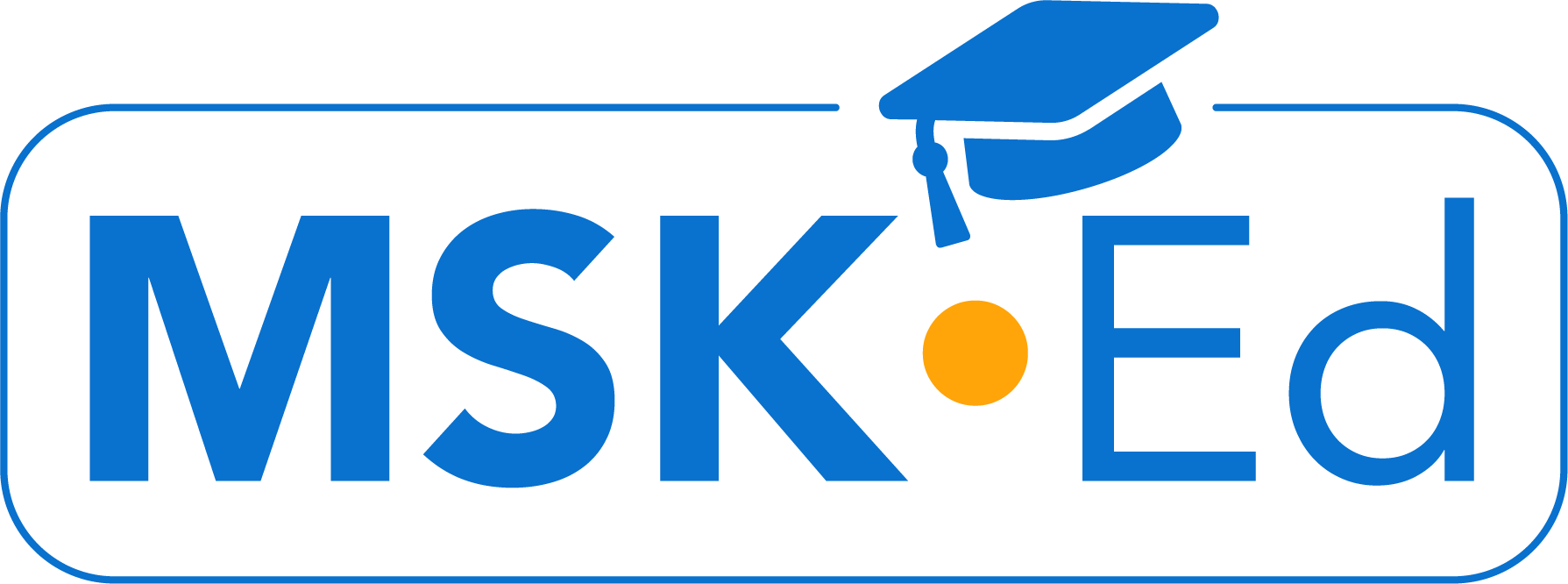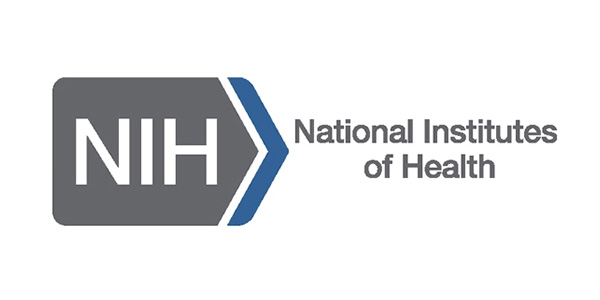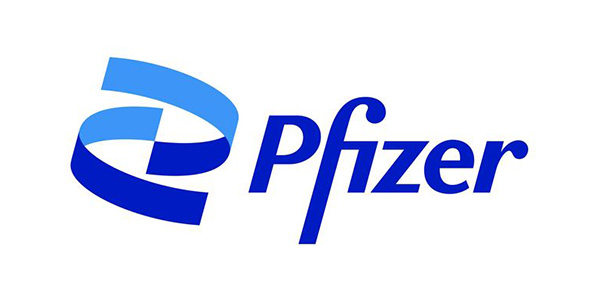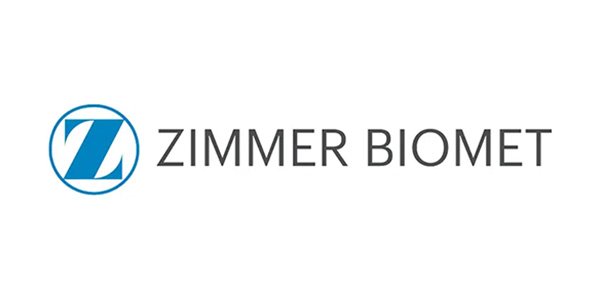MSK-Ed - Musculoskeletal Education for Fourth Year Residents
NEW - USBJI and Case to Bring Open-Access Scientific Videos for Primary Care ProvidersBackground and Overview Musculoskeletal Education for Primary Care Providers (MSK-Ed), a program of the United States Bone and Joint Initiative (USBJI), provides a turnkey solution for the musculoskeletal education of current and future primary care providers. The initial material development and field-testing phase of the program is focused on 4 th year medical students planning a career in primary care. This course will better enable these students to prevent, diagnose, and directly manage musculoskeletal disorders and injuries, and determine when to refer to specialists. It is designed for use by physicians and other advanced practitioner disciplines including nursing, nurse practitioners and physician assistants at all levels, from students, post-graduate trainees to practicing providers. Musculoskeletal diseases are among the most common conditions why patients present to healthcare providers and especially primary care providers. In 30-50% of visits to their practices, patients present because of musculoskeletal complaints. They are a major source of pain, disability and loss of quality of life. Despite this reality, primary care providers are underprepared to respond because education in the prevention, diagnosis and management of musculoskeletal disorders and injuries is underrepresented in undergraduate schools and postgraduate residency programs. The course is structured around the conditions which present most frequently, and will employ “flipped classroom” teaching and other innovative techniques, with high definition on-line video mini-lectures designed for independent synchronous or asynchronous viewing. The programs will be adaptable for both problem-based learning and team-based learning. In addition to the on-line open access components, classroom discussion groups and structured case studies, physical examination and procedure laboratories, clinical experiences will be used in some programs to further enhance the provider capabilities. A variety of novel assessment methods will be used to confirm acquisition of knowledge and competencies. The idea of improving the delivery of MSK patient care by educating the next generation of primary care physicians is very appealing. This initiative offers an opportunity to adjust the health care system to enable primary care providers to undertake an essential share of the burden of MSK prevention and care and to enable better coordination with specialists. The lessons learned with the pilot medical school program will form a foundation for expanding the program to other disciplines and spread the benefit to other countries that share the challenge of educating primary care providers to assume a large MSK burden. Medical training programs are constrained by time, resources and money in their ability to incorporate new information and/or programs into the curriculum. When a new program is available, they require an easy to implement yet comprehensive program that meets the rigorous standards of today’s medical education, while not disrupting the current training or being too costly to implement. That turnkey solution is provided with MSK-Ed. Deficit in Musculoskeletal Medical School Education
- Musculoskeletal (MSK) disorders affect an estimated 126.6 million American adults and account for $874 billion in annual treatment cost and lost wages.1
- 51.8 million adults reportedly have arthritis, 75.7 million adults suffer from neck or low back pain.1 One in two women and one in four men over the age of 50 will have an osteoporosis related fracture.1
- Disorders of the MSK system remain among the primary reasons that individuals visit healthcare providers in the United States and account for approximately 20 percent of visits to emergency departments and primary care clinics.2-4
- A survey of 300 primary care physicians reported that 30-40% of their case load involved MSK complaints.5
- In order to best care for their patients, physicians, especially primary care physicians, must understand the basic principles of diagnosing and treating MSK disorders.6
- Currently, physicians-in-training are not being well prepared to treat MSK disorders. Freedman and Bernstein, along with others, have reported medical school graduates have a lack of cognitive mastery in MSK medicine when evaluated using a validated examination.4, 7- 9
- Additionally, numerous surveys and subjective evaluations have reported that residents and practicing physicians lack confidence in patient care related to MSK medicine. 8-14
- An underlying cause for a lack of confidence and competence in newly graduated physicians and medical students might be the lack of instruction. DiCaprio et al. found that only 53% (65 of 122) of US medical schools had a required MSK course.15
- Since 2003, the USBJI, with the help of the Association of American Medical Colleges (AAMC) has advocated, with some success, for the incorporation of dedicated MSK coursework into the core curriculum. In 2011, a follow-up study by Bernstein et al to assess the rate of required instruction in MSK medicine found that as of 2010, the number of US medical schools with required MSK instruction had increased from 30 – 40% in 2003 to 83%, and that 78.7% (100/127) of these MSK courses are taught in the first two years.16 While this study demonstrated an improvement in prevalence of dedicated MSK curriculum, there is still an unanswered question regarding the quality and content of required clinical courses as only 15 percent (20/136) of medical school’s curriculum has required MSK clinical instruction.3
- Since 2003, national efforts to promote MSK medicine education have been a priority for the USBJI, as there have been demonstrated inadequacies in the knowledge and comfort of both physicians and medical students. However, even with focused curriculum revisions such as increased time in gross anatomy lab, MSK pathophysiology, and the physical examination, a lack of proficiency for medical students in MSK education has been reported.11
- An institutional survey of medical students, years 1-4, were given a validated orthopaedic examination in MSK competency yielded only a 19.3 percent pass rate and average score of 51.1 percent (70 percent is passing). 4,17 Students who had completed an elective in MSK had a significantly higher pass rate (67.5 percent, p˂0.001). A structured MSK lecture series during the clinical years showed a pass rate 81.6 percent on the MSK competency examination.4,18 Another institutional survey found that only 18 percent of 85 first year residents passed the MSK competency examination.4 Although this improvement exists, it would be ideal for 100% of medical schools to include MSK education in their overall curriculum, and those that do not include this may not be addressing this established knowledge gap.
- Undoubtedly, there is significant variability in the content and the teaching methods used during MSK education. This variability may in part be reflective of the fact that the accrediting body for medical schools, the LCME, does not have specific requirements for the structure and content MSK education. This variability may be another factor contributing to the low competency and confidence levels in MSK education. Project 100 was the initiative to raise the level of training that all graduating medical students receive in musculoskeletal health. Project 100 aims to bring about fundamental changes in the quality of care of patients with musculoskeletal conditions, a cornerstone goal of the Initiative. The purpose of Project 100 is to have musculoskeletal medicine recognized as an Essential Discipline by all medical schools; and to have the schools promote the inclusion of musculoskeletal medical curriculum with an emphasis equal to that given to other important organ systems. In other words, to have 100% of American medical schools require that their students meet the learning objectives set forth by the AAMC Medical Schools Objectives Project for musculoskeletal medicine.
- Through the work of Project 100, a number of significant achievements have been accomplished. The Association of American Medical Colleges (AAMC) released guidelines to medical schools on the attitudes, skills and knowledge all graduating medical students should possess in musculoskeletal medicine. A standing NBME Task Force now reviews and develops new questions for the Step 2 examinations to test effective understanding of musculoskeletal conditions. The NBME has developed a musculoskeletal subject examination. Coupled with the AAMC guidelines, this is expected to drive musculoskeletal courses at all medical schools. One hundred and twenty-five medical schools declared their support of the Initiative.
- Studies have shown that much of MSK education occurs as lectures and is almost exclusively during the preclinical years, with 85% of schools having no required clinical clerkships.3 This may be problematic in that clinical experiences have been shown to be an effectual learning experience, and earlier real patient learning has been shown to stimulate more effective learning seen through higher scores at the end of block exams and higher reported learner satisfaction.11, 19,20
- During clinical rotations, most schools utilize the National Board of Medical Examiners (NBME) subject exams which draws on MSK questions for 5-10% of their surgery, family medicine, and medicine clinical science exams.23 Increasing the percentage of MSK questions would encourage schools to adjust the curriculum to fit the need for more MSK competence. This could be supplemented with assessment methods designed from OSCE or USMLE Step 2 type integrative knowledge, which have demonstrated improved long-term retention and clinical performance.19 Ultimately, the implementation of a longitudinal MSK curriculum that spans all four years of medical school may prove to be beneficial.24
- NBME is currently considering a major change in approach to testing medical students. They are considering working with medical specialty and primary care organizations to develop subject focused self-assessment examinations tied to educational material. The extensive question bank developed for the NBME MSK Shelf exam could be mined to develop questions for a new self-assessment examination and the MSK-Ed for Fourth Year Medical Students course could be used as the integrated education program. USBJI has the opportunity to be an early developer of the concept working with NBME.
Course Concept and Design
- Interactive student-centered learning using PBL and TBL format have been shown to improve student comprehension, retention, and critical thinking. Evidence exists that these types of teaching benefit students through promotion of active learning, and ultimately may improve student competency in MSK education. Students at Johns Hopkins University and Harvard Medical School were found to have low confidence with performing a MSK examination.11,17 Future efforts may need to focus on expanded clinical education that incorporates hands-on MSK physical exam skills with multidisciplinary clinical scenarios, which may improve performance and competency. A recent review of experienced based learning argued that clerkship experience is beneficial for student acquisition of appropriate knowledge, skills, and attitudes.22
- The principle idea has been the construction of a standardized ready-to-use course with materials that can be employed by the faculty at all medical schools. The initial four-week course is focused on the general approach to MSK problems that would be seen in adult patients presenting to the typical ambulatory primary care office or clinic. It will emphasize patient evaluation with motivated interviewing and physical examination. Common MSK problems will be covered modules organized by regional skeletal anatomy. Additional modules will address major problems including: osteoporosis and fragility fractures, inflammatory arthritis, osteoarthritis, pain management, mechanical and postural problems, total joint replacement, and PCP-specialist coordination.
- The course will employ the latest concepts in medical education, including the “flipped classroom,” with extensive use of on-line mini lectures, videos of physical examinations and procedures for independent viewing. The modular design of the online material will enable individual medical schools flexibility in designing electives and related clinical rotations. Concept learned by independent viewing online will be reviewed and clarified in small discussion groups, example cases will be the basis for interactive learning and physical examination and procedural skills will be practiced in hands-on-laboratories.
- In addition to the four week general course, two week electives are being considered for: MSK Pediatrics, MSK Emergency Medicine, Sports Medicine and Ultrasound, Geriatrics, Occupational Medicine and Employee Health.
Management and Development Team Steering CommitteeBruce D Browner, MD, MHCM, FACS, FAOA - ChairBart Clarke, MD Matthew B. Dobbs, MD Jonathan Kirschner, MD, RMSK Marjorie Kulesa RN, BS, ONC, CNOR Vani J. Sabesan, MD Kimberly J. Templeton, MD Paul Ullucci, Jr., PT, PhD, DPT, ATC, SCS, CSCS, EMR John M Ventura, DC Team LeadersClaudia L Campos, MD, FACP Fraser Leversedge, MD Martin Boyer, MD, FRCS(C) Michael P. Reiman, PT, DPT, OCS, SCS, ATC, FAAOMPT, CSCS Eugene A. Lewis, DC, MPH, FICC Irfan M. Asif, MD Eugene Hong, MD CAQSM FAAFP Priya Radhakrishnan, MD FACP Norah Foster, MD Samuel Wellman., MD Michael P. Bolognesi, MD Lauren Geaney, MD André P. Boezaart, MD, PhD Ajay Antony, MD Richa Wardhan, MD Bart Clarke, MD Cathleen Colon-Emeric, MD, FACP, MHS Beth L Jonas, MD Christine H Jones MD Jonathan Kirschner, MD, RMSK Vani J. Sabesan, MD Team MembersKathryn M Andolsek MD MPH Nels Carlson, MD, FAAPMR Kathy Coyner, MD Sameer Dixit MD James ("Jim") E. Eubanks, Jr. MD, MS Robert Fuller, MD John Hardin, MD Kelly M Harrell, PhD, MPT Paul Howard, MD Anand B Joshi, MD, MHA Jonathan Kay, MD Nancy E. Lane, MD Aleksander (Aleks) Lenert, MD, FRCPC Paul E. Levin, MD Eugene A. Lewis, DC, MPH, FICC Archana Mahankali, MD Benjamin Martin, MD, FAAP Al Masi, MD, DR. PH Patricia Ng, MD John W. Norbury, MD Ronald P Olson, MD Paul O’Rourke, MD, MPH Michael P. Reiman, PT, DPT, OCS, SCS, ATC, FAAOMPT, CSCS Carlin Senter, MD Vivek Sindhi, MD, MBA M. E. Beth Smith, DO, MCR, FACP Halle G. Sobel MD, FACP Lori Wagner, MD, MA, FACP Steven Yale MD, FACP Daniella Zipkin MD Michael E. Zychowicz, DNP, ANP, ONP, FAAN, FAANP Staff LiaisonsToby King, CAE Shari Maier Ann Elderkin, PA Jim Griffith, MBA, CAE Ex officioJoseph Bernstein MD, MS, Chair, USBJI Project 100 David S. Pisetsky, MD, PhD Marc C. Hochberg, MD, MPH, MACP ContactFor further information about MSK-Ed, please contact Bruce Browner, MD, [email protected]. References
- United States Bone and Joint Initiative: The Burden of Musculoskeletal Diseases in the United States (BMUS). 2014; 8: http://www,boneandjointburden.org. Accessed March 12, 2018.
- St Sauver JL, Warner DO, Yawn BP, et al. Why patients visit their doctors: assessing the most prevalent conditions in a defined American population. Mayo Clinic Proceedings. 2013;88(1):56-67. doi:10.1016/j.mayocp.2012.08.020.
- DiGiovanni BF, Sundem LT, Southgate RD, Lambert DR. Musculoskeletal Medicine Is Underrepresented in the American Medical School Clinical Curriculum. Clinical Orthopaedics and Related Research. 2016;474(4):901-907. doi:10.1007/s11999-015-4511-7.
- Freedman KB, Bernstein J. The adequacy of medical school education in musculoskeletal medicine. The Journal of bone and joint surgery. American volume. 1998; 80(10):1421-1427.
- Abou-Raya A, Abou-Raya S. The inadequacies of musculoskeletal education. Clinical Rheumatology. 2010;29(10):1121-1126. doi:10.1007/s10067-010-1527-y.
- Pinney SJ, Regan WD. Educating medical students about musculoskeletal problems. Are community needs reflected in the curricula of Canadian medical schools? The Journal of bone and joint surgery. American volume. 2001;83-a(9):1317-1320.
- Lynch JR, Schmale GA, Schaad DC, Leopold SS. Important demographic variables impact the musculoskeletal knowledge and confidence of academic primary care physicians. The Journal of bone and joint surgery. American volume. 2006;88(7):1589-1595. doi:10.2106/jbjs.e.01365.
- Matzkin E, Smith EL, Freccero D, Richardson AB. Adequacy of education in musculoskeletal medicine. The Journal of Bone and Joint Surgery. American volume. 2005;87(2):310-314. doi:10.2106/jbjs.d.01779.
- Schmale GA. More evidence of educational inadequacies in musculoskeletal medicine. Clinical Orthopaedics and Related Research. 2005(437):251-259.
- Clawson DK, Jackson DW, Ostergaard DJ. It's past time to reform the musculoskeletal curriculum. Academic Medicine: Journal of the Association of American Medical Colleges. 2001;76(7):709-710.
- Day CS, Yeh AC, Franko O, Ramirez M, Krupat E. Musculoskeletal medicine: an assessment of the attitudes and knowledge of medical students at Harvard Medical School. Academic Medicine: Journal of the Association of American Medical Colleges. 2007;82(5):452- 457. doi:10.1097/ACM.0b013e31803ea860
- Freedman KB, Bernstein J. Educational deficiencies in musculoskeletal medicine. The Journal of Bone and Joint Surgery. American volume. 2002;84-a(4):604-608.
- Joy EA, Van Hala S. Musculoskeletal curricula in medical education: filling in the missing pieces. The Physician and Sportsmedicine. 2004;32(11):42-48. doi:10.3810/psm.2004.11.630.
- Stockard AR, Allen TW. Competence levels in musculoskeletal medicine: comparison of osteopathic and allopathic medical graduates. The Journal of the American Osteopathic Association. 2006;106(6):350-355.
- DiCaprio MR, Covey A, Bernstein J. Curricular requirements for musculoskeletal medicine in American medical schools. The Journal of Bone and Joint Surgery. American volume. 2003;85-a(3):565-567.
- Bernstein J, Garcia GH, Guevara JL, Mitchell GW. Progress report: the prevalence of required medical school instruction in musculoskeletal medicine at decade's end. Clinical Orthopaedics and Related Research. 2011;469(3):895-897. doi:10.1007/s11999-010-1477-3.
- Skelley NW, Tanaka MJ, Skelley LM, LaPorte DM. Medical student musculoskeletal education: an institutional survey. The Journal of Bone and Joint Surgery. American volume. 2012;94(19):e146(141-147). doi:10.2106/jbjs.k.01286.
- Schiff A, Salazar D, Vetter C, Andre J, Pinzur M. Results of a near-peer musculoskeletal medicine curriculum for senior medical students interested in orthopedic surgery. Journal of Surgical Education. 2014;71(5):734-737. doi:10.1016/j.jsurg.2014.01.007.
- de Boer A, Melchers D, Vink S, Dekker F, Beaart L, de Jong Z. Real patient learning integrated in a preclinical block musculoskeletal disorders. Does it make a difference? Clin Rheumatol. 2011;30(8):1029-1037. doi:10.1007/s10067-011-1708-3.
- Smithburger PL, Kane-Gill SL, Ruby CM, Seybert AL. Comparing effectiveness of 3 learning strategies: simulation-based learning, problem-based learning, and standardized patients. Simulation in healthcare: Journal of the Society for Simulation in Healthcare. 2012;7(3):141-146. doi:10.1097/SIH.0b013e31823ee24d.
- He J, Tang Q, Dai R, Li Z, Jiang Y. Problem-, team- and evidence-based learning. Medical Education. 2012;46(11):1102-1103. doi:10.1111/medu.12033.
- Dornan T, Tan N, Boshuizen H, et al. How and what do medical students learn in clerkships? Experience based learning (ExBL). Adv Health Sci Educ Theory Pract. 2014;19(5):721-749. doi:10.1007/s10459-014-9501-0
- National Board of Medical Examiners website http://www.nbme.org/students/Subject-Exams/subexams.html
- West C, Jaeger T, McDonald F. A longitudinal medical school evidence based medicine curriculum. MedEdPortal 2014; 10:9827.
|








